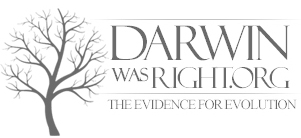
Migration into or out of a population may be responsible for a marked change in allele frequencies (the proportion of members carrying a particular variant of a gene). Immigration may also result in the addition of new genetic variants to the established gene pool of a particular species or population.
There are a number of factors that affect the rate of gene flow between different populations. One of the most significant factors is mobility, as greater mobility of an individual tends to give it greater migratory potential. Animals tend to be more mobile than plants, although pollen and seeds may be carried great distances by animals or wind.
Maintained gene flow between two populations can also lead to a combination of the two gene pools, reducing the genetic variation between the two groups. It is for this reason that gene flow strongly acts against speciation, by recombining the gene pools of the groups, and thus, repairing the developing differences in genetic variation that would have led to full speciation and creation of daughter species.
For example, if a species of grass grows on both sides of a highway, pollen is likely to be transported from one side to the other and vice versa. If this pollen is able to fertilize the plant where it ends up and produce viable offspring, then the alleles in the pollen have effectively been able to move from the population on one side of the highway to the other
Barriers to Gene Flow
Barriers to gene flow need not always be physical. Species can live in the same environment, yet show very limited gene flow due to limited hybridization or hybridization yielding unfit hybrids.
Gene Flow in Humans
Gene Flow Between Species
Gene transfer, defined as the movement of genetic material across species boundaries, which includes horizontal gene transfer, antigenic shift, and reassortment is sometimes an important source of genetic variation. Viruses can transfer genes between species. Bacteria can incorporate genes from other dead bacteria, exchange genes with living bacteria, and can exchange plasmids across species boundaries. “Sequence comparisons suggest recent horizontal transfer of many genes among diverse species including across the boundaries of phylogenetic “domains”. Thus determining the phylogenetic history of a species can not be done conclusively by determining evolutionary trees for single genes.”
Biologist Gogarten suggests “the original metaphor of a tree no longer fits the data from recent genome research”. Biologists [should] instead use the metaphor of a mosaic to describe the different histories combined in individual genomes and use the metaphor of an intertwined net to visualize the rich exchange and cooperative effects of horizontal gene transfer.
“Using single genes as phylogenetic markers, it is difficult to trace organismal phylogeny in the presence of HGT [horizontal gene transfer]. Combining the simple coalescence model of cladogenesis with rare HGT [horizontal gene transfer] events suggest there was no single last common ancestor that contained all of the genes ancestral to those shared among the three domains of life. Each contemporary molecule has its own history and traces back to an individual molecule cenancestor. However, these molecular ancestors were likely to be present in different organisms at different times.”
Genetic Pollution
Su H, Qu LJ, He K, Zhang Z, Wang J, Chen Z, Gu H (March 2003). “The Great Wall of China: a physical barrier to gene flow?”. Heredity 90 (3): 212–9. doi:10.1038/sj.hdy.6800237. PMID 12634804.
“Brain & Ecology Deep Structure Lab”. Brain & Ecology Comparative Group. Brain & Ecology Deepstruc. System Co., Ltd.. 2010. Retrieved March 13, 2011.
http://66.102.7.104/search?q=cache:tpICVNWaTbgJ:non.fiction.org/lj/community/ref_courses/3484/enmicro.pdf+sex+evolution+%22Horizontal+gene+transfer%22+-human+Conjugation+RNA+DNA&hl=en
http://www2.nau.edu/~bah/BIO471/Reader/Pennisi_2003.pdf
http://opbs.okstate.edu/~melcher/MG/MGW3/MG334.html
Horizontal Gene Transfer – A New Paradigm for Biology (from Evolutionary Theory Conference Summary), Esalen Center for Theory & Research
